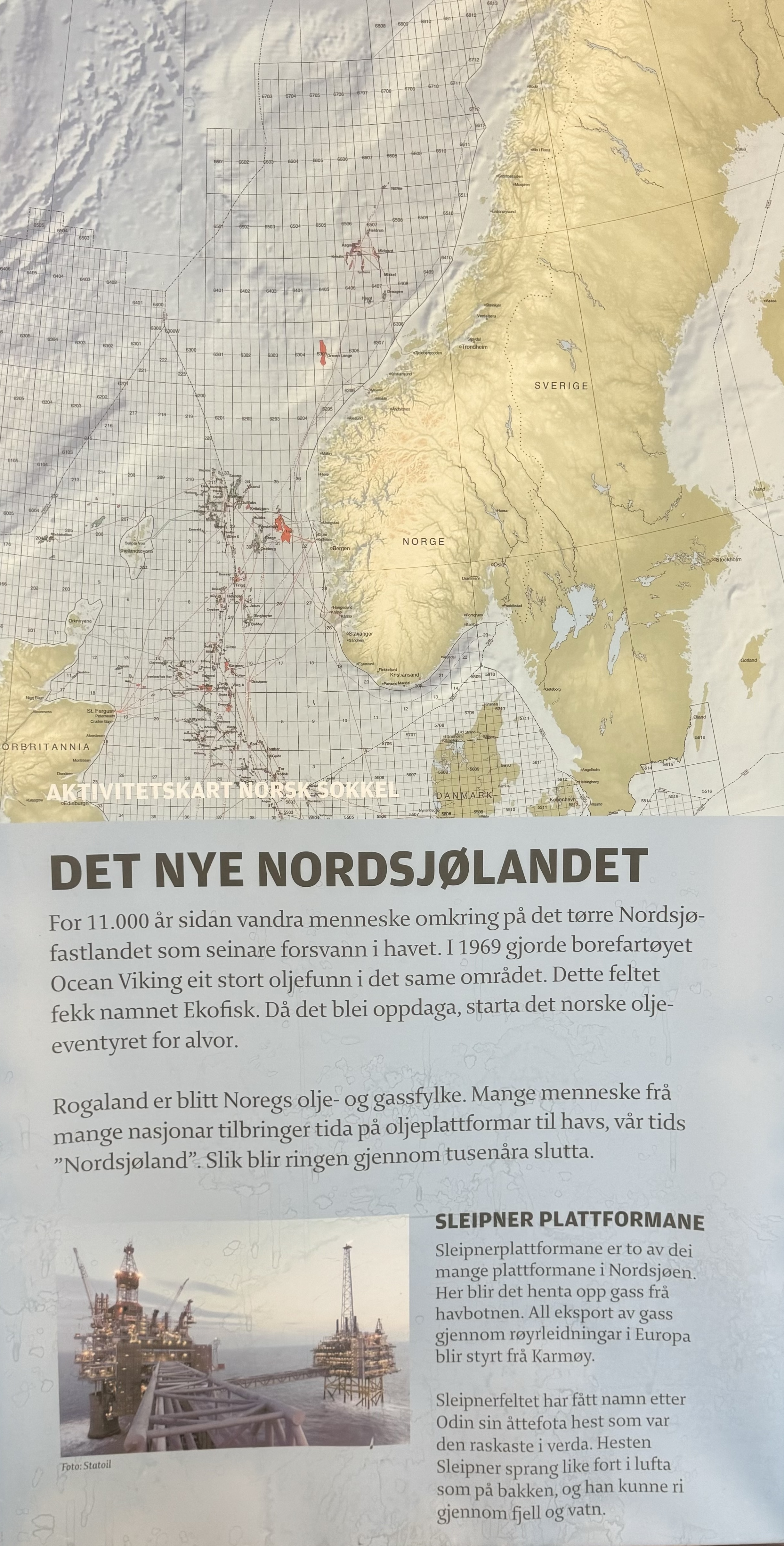
The poster shows a map of the North Sea region with boundary markings and activity areas on the Norwegian continental shelf. The map outlines Scandinavia, including Norway, Sweden, and northern parts of Europe, along with the United Kingdom and Denmark. In the North Sea area, there are a number of grids and extraction zones marked in red. Part of the map provides geographical information and the boundaries for operational areas at sea.
Below the map is text that describes the history and development of the oil industry in the North Sea. The text mentions that about 11,000 years ago, this area was dry land before it was flooded by water. In 1969, the discovery of oil by the vessel Ocean Viking in the Ekofisk oil field marked the beginning of Norway's adventure in the oil industry. The Rogaland region in Norway became the main area for oil and gas extraction, and many people from various countries work on platforms in this region, known as "The New North Sea Country." The description indicates a symbolic closing of the historical circle that spans thousands of years.
Further down, there is a photo of two drilling platforms, marked as "SLEIPNER PLATFORMS." The text next to the image explains that the Sleipner platforms are part of Norway's extraction installations in the North Sea, where gas is extracted from the seabed and transported to Europe. The Sleipner field is named after Sleipnir, a horse from Norse mythology known for its speed and ability to traverse various landscapes.
The entire poster, consisting of the map and accompanying text, provides a comprehensive overview of industrial activity on the Norwegian continental shelf, covering both historical aspects and the contemporary significance of this region for Norway's economy and the international energy market.
THE NEW NORTH SEA LAND
11,000 years ago, humans wandered around the dry North Sea mainland that later disappeared into the sea. In 1969, the drilling vessel Ocean Viking made a significant oil discovery in the same area. This field was named Ekofisk. When it was discovered, the Norwegian oil adventure really began.
Rogaland has become Norway's oil and gas county. Many people from many nations spend time on oil platforms at sea, our time's "North Sea land." Thus, the circle through the millennia is completed.
SLEIPNER PLATFORMS
The Sleipner platforms are two of the many platforms in the North Sea. Here, gas is extracted from the seabed. All gas exports through pipelines in Europe are controlled from Karmøy.
The Sleipner field is named after Odin's eight-legged horse, which was the fastest in the world. The horse Sleipner could run as fast in the air as it could on the ground, and it could travel through mountains and water.